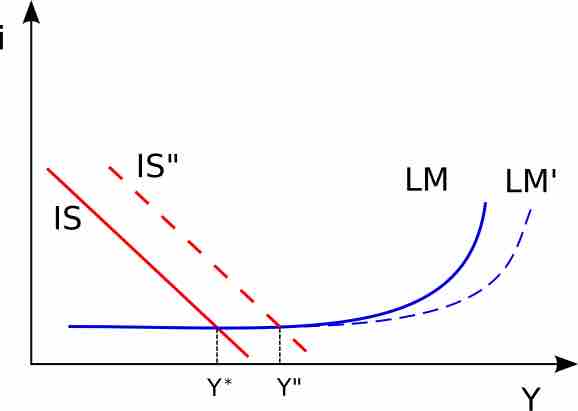Monetary policy is the process by which the monetary authority of a country controls the supply of money with the purpose of promoting stable employment, prices, and economic growth. Monetary policy can influence an economy but it cannot control it directly. There are limits as to what monetary policy can accomplish. Below are some of the factors that can make monetary policy less effective.
Multiple Factors Influencing Economy
While monetary policy can influence the elements listed above, it is not the only thing that does. Fiscal policy can also directly influence employment and economic growth. If these two policies do not work in concert, they can cancel each other out. This is an especially significant problem when fiscal policy and monetary policy are controlled by two different parties. One party might believe that the economy is teetering on recession and may pursue an expansionary policy. The other group may believe the economy is booming and pursue a contractionary policy. The result is that the two would cancel each other, so that neither would influence the direction of the economy.
Liquidity Trap
A liquidity trap is a situation where injections of cash into the private banking system by a central bank fail to lower interest rates and therefore fail to stimulate economic growth . Usually central banks try to lower interest rates by buying bonds with newly created cash. In a liquidity trap, bonds pay little to no interest, which makes them nearly equivalent to cash. Under the narrow version of Keynesian theory in which this arises, it is specified that monetary policy affects the economy only through its effect on interest rates. Thus, if an economy enters a liquidity trap, further increases in the money stock will fail to further lower interest rates and, therefore, fail to stimulate.

Liquidity Trap
Sometimes, when the money supply is increased, as shown by the Liquidity Preference-Money Supply (LM) curve shift, it has no impact on output (GDP or Y) or on interest rates. This is a liquidity trap.
A liquidity trap is caused when people hoard cash because they expect an adverse event such as deflation, insufficient aggregate demand, or war. Signature characteristics of a liquidity trap are short-term interest rates that are near zero and fluctuations in the monetary base that fail to translate into fluctuations in general price levels.
Deflation
Deflation is a decrease in the general price level of goods and services. Deflation occurs when the inflation rate falls below 0%. This should not be confused with disinflation, a slowdown in the inflation rate. Inflation reduces the real value of money over time; conversely, deflation increases the real value of money. This allows one to buy more goods with the same amount of money over time.
From a monetary policy perspective, deflation occurs when there is a reduction in the velocity of money and/or the amount of money supply per person. The velocity of money is the frequency at which one unit of currency is used to purchase domestically-produced goods and services within a given time period. In other words, it is the number of times one dollar is spent to buy goods and services per unit of time. If the velocity of money is increasing, then more transactions are occurring between individuals in an economy.
Deflation is a problem in a modern economy because it increases the real value of debt and may aggravate recessions and lead to a deflationary spiral. If monetary policy is too contractionary for too long, deflation could set in.